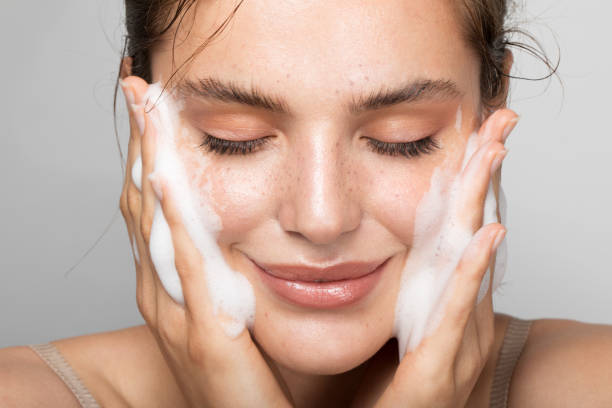Hydroxy Acids, Why We Need Them

There are several acids on the market today. In this post we will break down some of those used in topical skin care preparations and explain the mechanism of action between them. This is a simplified overview, designed to help you make product selections best for your skin type, as always you can do further research into any one of these acids for you personal skin care needs.
Alpha Hydroxy Acids (AHAs)
The most commonly used acids in topical skincare and include Lactic, Glycolic, Malic, Tartaric, and Citric. There mechanism of action works by exfoliating the skin, helping to stimulate collagen and the formations of glycosaminoglycans also known as "GAGS" . They normalize (smooth) the stratum corneum (the outer-most layer of the epidermis) and can regulate keratinization. We love them for aging skin where cell turnover is sluggish and the skin needs a boost of radiance.
Beta Hydroxy Acid (BHAs)
There is only one beta hydroxy acid – Salicylic – derived from willow bark which is also found in aspirin. Like AHAs, beta hydroxy acid (BHA) also acts as an exfoliant increasing the shedding of dead skin cells. BHA is extremely useful for treating breakouts/acne prone skin types and helps manage keratosis pilaris and other conditions that involve blocked or clogged pores. Beta hydroxy acid helps to loosen the "glue" between skin cells allowing them to shed more efficiently and therefore eliminating clogged pores where acne formation begins. Salicylic acid is also anti-inflammatory which helps to calm the skin from redness and irritation often associated with acne.
Polyhydroxy Acid (PHAs)
This generation of AHAs, these allow for slower and gradual penetration. The absorption is non-irritating and doesn’t sting. PHAs support the skin matrix around collagen, help restore skin barrier function and protect against collagen degradation. PHAs are probably the most multi-tasking of all acids.
Gluconolactone, lactobionic and maltobionic are examples of PHAs.
Best for signs of aging and sensitive or dehydrated skins.
What’s difference between acids?
AHAs are water soluble, they do not penetrate deeply beneath the skin’s surface therefore working on the outer most layer. BHA is oil (lipid) soluble. This allows the BHA (Salicylic) to penetrate oily pores and help to exfoliate and clear the pore itself. This is why salicylic is particularly useful when used on oily and Acneic skins types. PHAs tend to be better for sensitive skins due to their larger molecular size and slower penetration. PHAs are great humectants on the skin, making them particularly good choices for dehydrated skins.
Glycolic
Glycolic is derived from sugarcane and is the smallest in molecular size. It's an effective AHA due to its ability to quickly penetrate and stimulate fibroblast cells to aid in the formation of collagen. It exfoliates the skin by increasing cell turnover, evens skin tone and builds the support structure in the dermal matrix reducing wrinkles. While it is an effective acid, if your skin is sensitive we recommend an alternate acid as glycolic can cause sensitivity.
Lactic
Originally derived from milk, is now lab synthesized to maintain stability and efficacy. Lactic works to dissolve the glue in between dead surface cells making it good for gently exfoliating and lightly hydrating the skin. Keeps the skin smooth and soft while gently supporting healthy cell turnover.
Mandelic
Derived from almonds and fat soluble, this is a good choice for oilier skins types as the molecules can penetrate skin with high amounts of sebum (oil) Mandelic is also antibacterial and can regulate sebum production with regular use. Mandelic is mild and will not dry out the skin. A great choice for acne/oily prone skin types
Citric
Helps to reduce signs of photo (sun) damage while also improving the quality of the dermal matrix, it is often used as a natural preservative. Look for specific mentions of citric in positioning of the formula otherwise it most likely is serving as a preservative.
Tartaric and Malic
Mainly derived from grapes/apples/pears and cherries, these are gentle hydroxy acids with a high antioxidant profile and can aid in skin respiration. We find these acids as great compliments to other hydroxy acids.
Salicylic
Derived from willow bark, salicylic acid is oil soluble and penetrates and breaks down the ‘glue’ that causes breakouts and oily, uneven skins. It loosens desmosomes allowing the cell to let go of the excess sebum that oily skins like to hold on to. Think of desmosomes as the bond, attaching your cells together. Salicylic loosens the bonds to decongest the skin and help if shed more efficiently. Salicylic acid also has antibacterial properties effectively regulating the bacteria that causes acne/breakouts.
Gluconolactone
A largely antioxidant PHA, gluconolactone is the multi-tasker of all acids. It is made of multiple humectant hydroxyls, which hydrate the skin. It also attacks free radicals, helping protect the skin from UV damage and supports barrier function, allowing the skin to reduce redness with regular use. Gluconolactone inhibits elastase, the cause of skin sagging, and helps maintain elasticity.
Lactobionic
Derived from milk sugars, lactobionic acids are massive antioxidants and help prevent and reverse signs of aging including lines, pigmentation, large pores and uneven texture. They promote skin firmness and stop the degradation of collagen. A natural humectant, they bind water to the skin, making them perfect for dehydrated skins.
Maltobionic
The most humectant of acids, it supports antioxidant protection, helps to protect from hyperpigmentation caused by sun exposure. Maltobionic acid can improve skin texture, firmness, clarity, tone and reduce wrinkles.
We hope this has been a helpful overview of the most common acids found in topical skin care products. If we missed anything, drop us a note in the comment section below and we'll be sure to add. Cheers to healthy skin!

